How Different Cultures Perceive the Concept of Gender
Gender is a malleable idea and differs from biological concepts such as sex.
And as a matter of fact, there are way more genders than there are biological sexes.
However, the way we perceive gender varies according to our culture.
Anthropologists have extensive documentation of cultures that acknowledge more than two genders.
But nowadays, some people struggle to find validation.
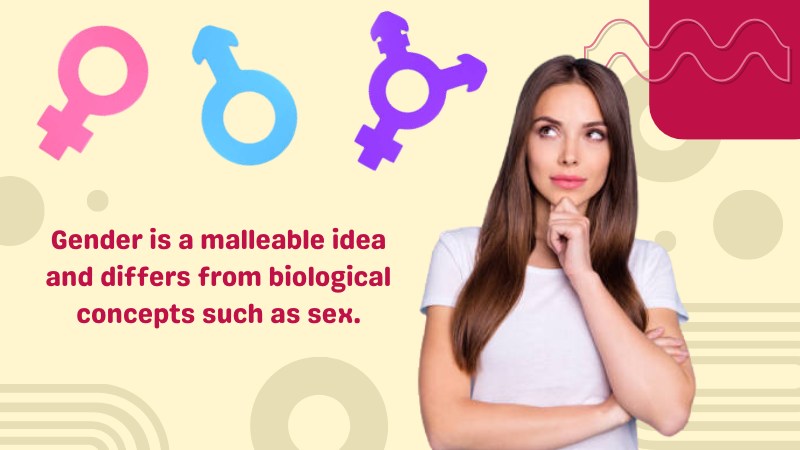
In today’s article, I’ll describe the cultural variances of gender. Western culture is somewhat limited to two.
But I’ll show you how other civilizations used to have different perceptions.
It helps to validate different identities, showing that you don’t have to conform to your gender at birth.
If you’re curious about that, read it till the end!
Western civilization (Christian culture)

By Western civilization, I mean the general mainstream Christian culture.
It includes Catholics, Protestants, Presbyterians, and all sorts of cultures based on Christianism.
I say so because they are the majority in influential countries, such as the United States and some places in Europe.
And for centuries, they have only acknowledged two genders based on the perception of biological sex.
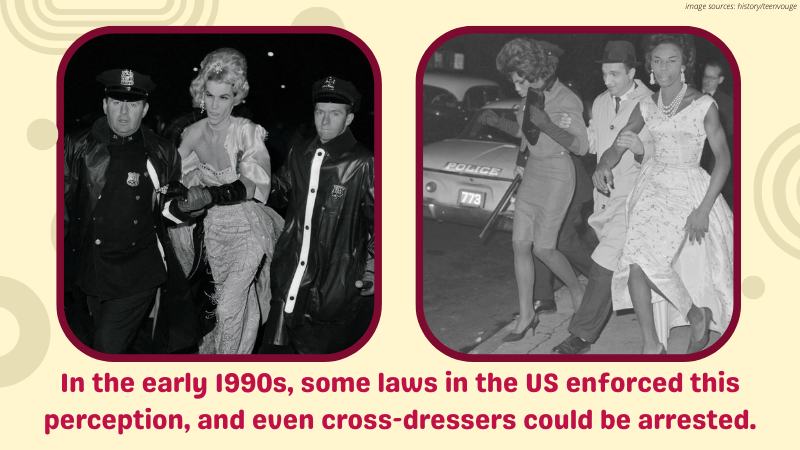
Cross-dressing was common to some extent, but as a kind of satire, obeying gender stereotypes and roles.
Gender rules were still dictated by religion, and because of that, people complied to conform to their gender roles as soon as they were born.
In the early 1990s, some laws in the US enforced this perception, and even cross-dressers could be arrested.
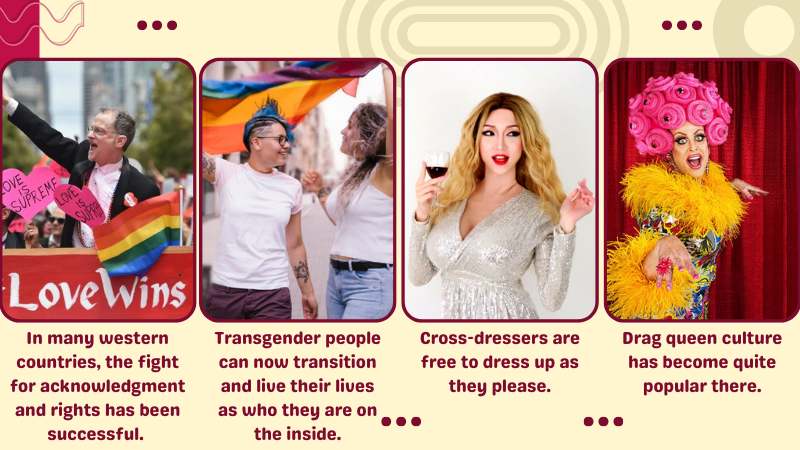
But cultures change with time. In many Western countries, the fight for acknowledgment and rights has been successful.
As such, transgender people can now transition and live their lives as who they are on the inside.
Cross-dressers are free to dress up as they please, and drag queen culture has become quite popular there.
Western laws are acknowledging not only that but non-binary people as well.
Still, some people refuse to do so, as they are too limited by their culture.
And because of that, anything that doesn’t conform to their views still suffers from discrimination.
That is an example of how cultural boundaries dictate behavior, but it is also a way of showing that it can change.
And as far as I’m concerned, things are changing for the better.
Just look how far we’ve come in the past few decades!
Native Americans
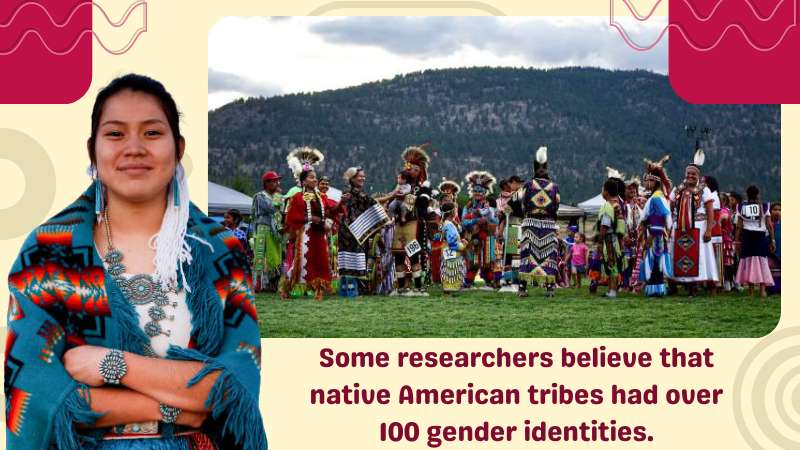
The natives from both south, north, and central America had different perceptions of gender.
As such, they had definitions for multiple gender identities, which were not tied to biological sex.
Cross-dressing was also rare among these groups since most of their clothes were gender-neutral.
Some natives from South America didn’t even wear clothes at all, so outfits had very loose ties to gender.
Still, there was some degree of distinction between male and female identities and their roles in society.
But it was pretty varied. Some researchers believe that native American tribes had over 100 gender identities.
However, due to the unfortunate course of history, many of these cultures are forever lost.
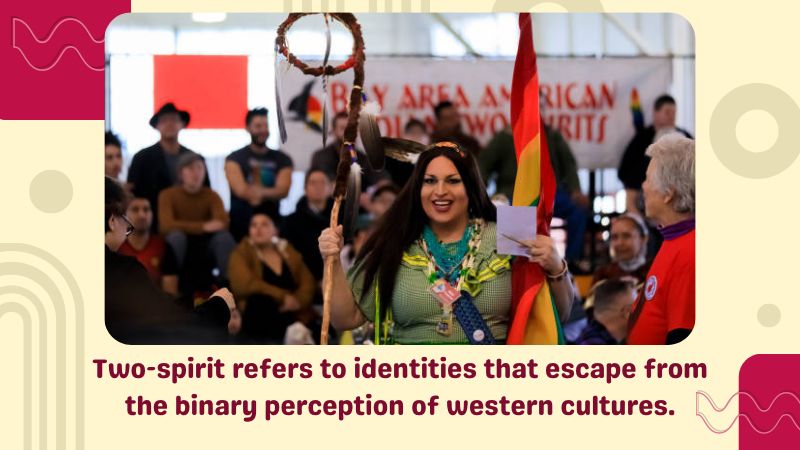
Some efforts have been made to recover this cultural inheritance in recent years.
To include these people in the LGBTQ community in a non-ethnocentric way, we use “Two-spirit .”
It comes from the belief of ancient native Americans that gender is related to the spirit rather than to the body.
And it is something that can be reflected in their gender expression as a whole.
Two-spirit refers to identities that escape from the binary perception of Western cultures.
It is a general term that covers most native American identities.
Besides that, as most remaining groups now use modern outfits, cross-dressing has become easier for them.
But there’s still work to be done if we want to fully comprehend how they perceived gender in the Americas before the Europeans arrived.
Greece
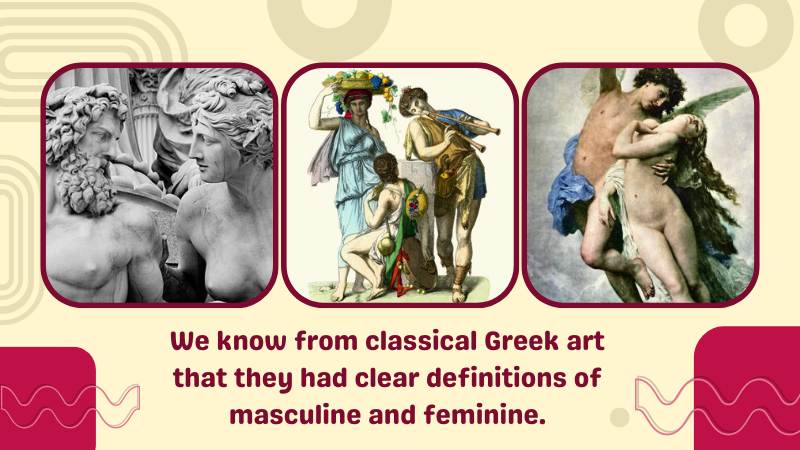
We know from classical Greek art that they had clear definitions of masculine and feminine.
After all, ancient Greece was the root of Western Christian culture.
However, many aspects of this culture were misinterpreted to fit Roman and catholic standards.
Yes, male and female were two genders widely acknowledged by the Greeks.
But being in the spotlight doesn’t mean that they were the only genders present in the ancient Greek way of thinking.
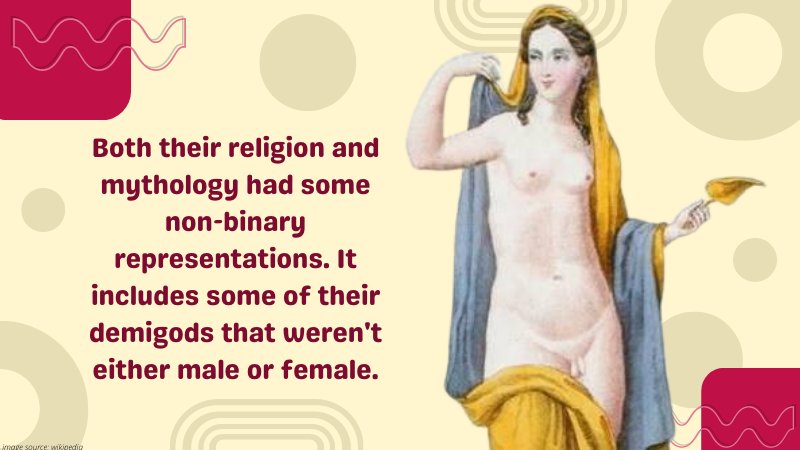
The fact is that both their religion and mythology had some non-binary representations.
It includes some of their demigods that weren’t either male or female.
The best example I can think of is, of course, Hermaphroditus.
His name is a mash-up of his parents’ names, Hermes and Aphrodite, and the very word “hermaphrodite” is named after him.
He is the symbol of androgyny in ancient Greek culture and has both male and female characteristics.
The existence of intersex people in these times was often tied to him as well, at least in their beliefs.
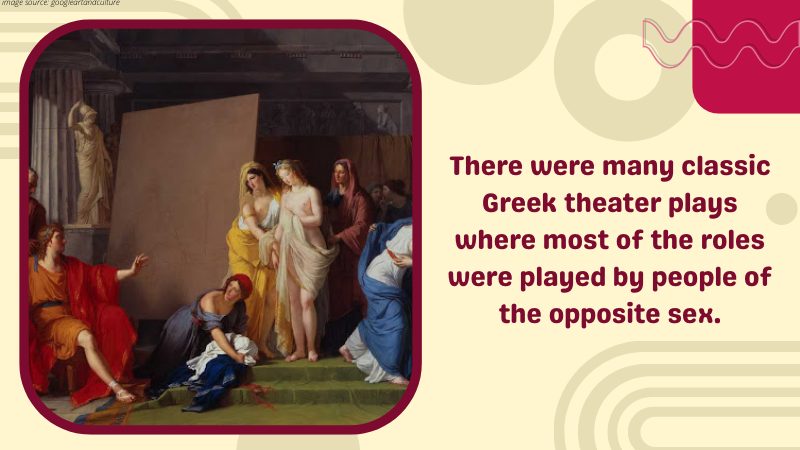
Besides that, cross-dressing was common in many Greek Poleis and was far from being a taboo.
This way, we can assume that they acknowledged at least a few gender identities other than male and female.
Another thing to add is that cross-dressing was more than common in ancient Greece.
There were many classic Greek theater plays where most of the roles were played by people of the opposite sex. It was considered to be fun and was actually encouraged.
This might be the first example in history of cross-dressing as a form of art.
Indonesia
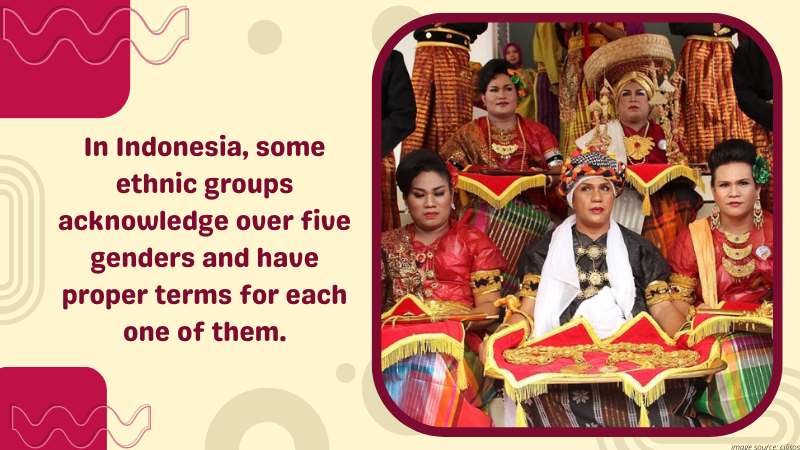
In Indonesia, some ethnic groups acknowledge over five genders and have proper terms for each one of them.
The group in question is the Bugis. Such terms are part of their vocabulary to refer to different combinations of sexuality and gender identity.
Some of these terms refer to what we know as cross-dressers, while others are best to describe transgender people.
Some combinations might also be interpreted as non-binary, with different levels of masculinity and femininity.
A few other states in the Asian continent also have distinct words for a “third gender” or other variations.
Two of the most well-known examples are Pakistan and Thailand.
These cultures differ a lot from Western perceptions and have different views towards gender.
Japan
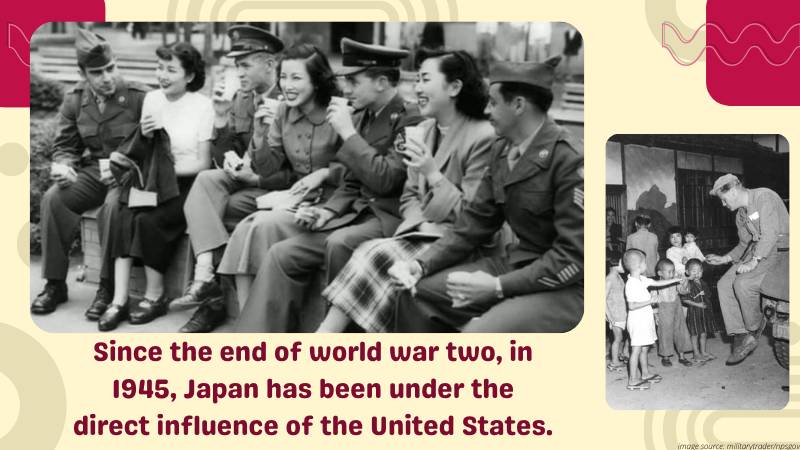
Since the end of World War Two in 1945, Japan has been under the direct influence of the United States.
As a consequence, Japanese culture has incorporated many Western prejudices regarding gender.
Not even sexuality is protected by law in a few regions of Japan.
But a couple of centuries ago, they had a clear definition of a third gender.
Yet, unlike other cultures, it was something directly tied to biological sex, beauty standards, and sexuality.
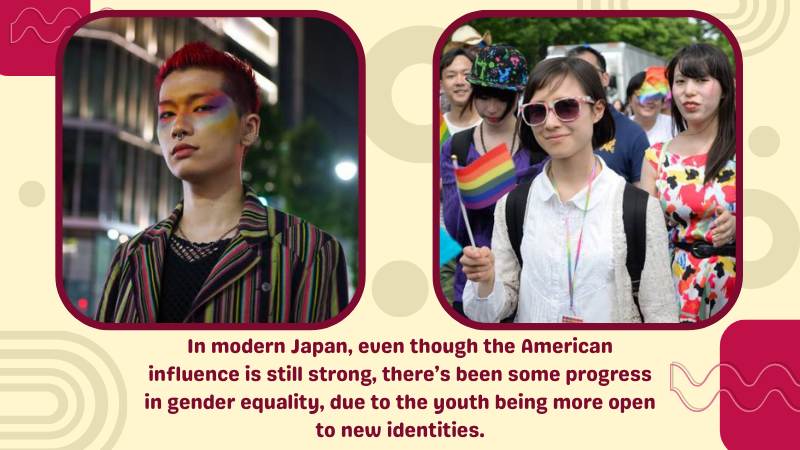
They used this notion of a “Third gender” notion to identify young men who fit two requirements.
The first requirement was to match their beauty standards in both masculine and feminine ways.
And the second one was to be sexually available to both men and women.
In modern Japan, even though the American influence is still strong, there’s been some progress in gender equality due to the youth being more open to new identities.
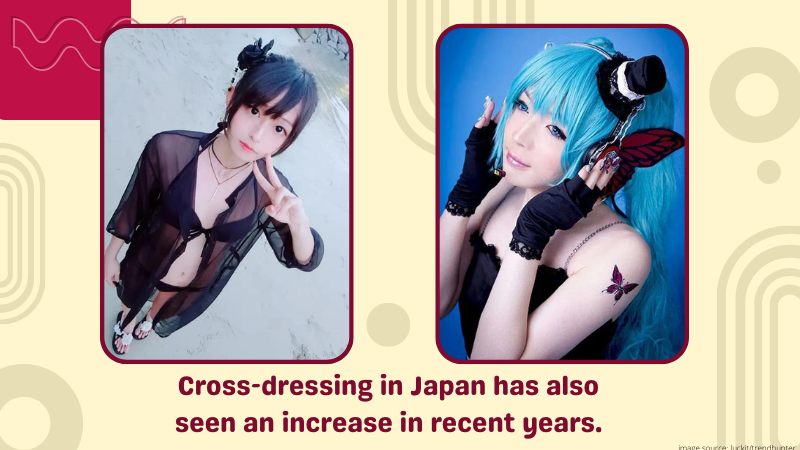
Cross-dressing in Japan has also seen an increase in recent years.
They even have a word for men who have a more feminine gender expression, “Otokonoko” (男の娘).
Japan also exports some hormones intended to be used in hormonal replacement therapies by trans people.
China
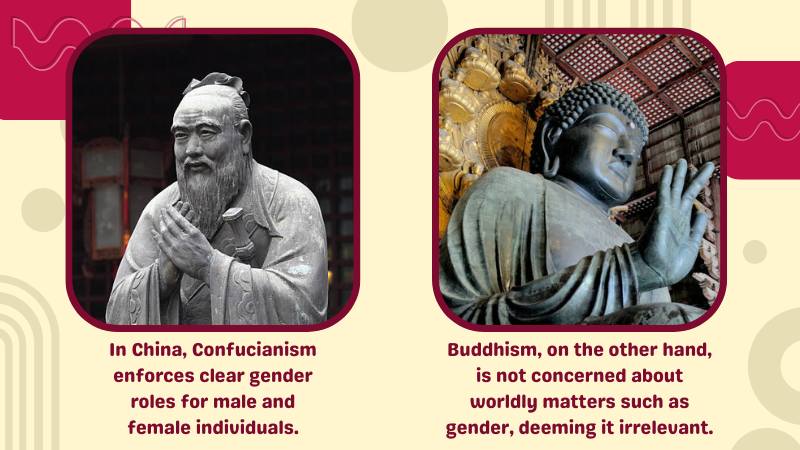
In China, Confucianism enforces clear gender roles for male and female individuals.
It discourages other perceptions of gender identity.
And Buddhism, on the other hand, is not concerned about worldly matters such as gender, deeming it irrelevant.
Because of that, the Chinese perception of gender is somewhat similar to today’s Western culture.
It doesn’t mean, however, that they don’t acknowledge trans people, much on the opposite.
Some recent research shows that public opinion towards LGBTQ people is somewhat positive and improves with time.

In fact, it’s even better than some places in the United States, such as Texas.
China is an example of how other gender identities can still exist in cultures with different perceptions of gender roles.
Besides that, the Chinese market is one of the best places to look if you want to buy cross-dressing supplies.
Companies such as Roanyer produce high-quality items at an affordable price to help cross-dressers in their transformations.
In other countries with a more conservative view, this would be impossible to accomplish.
The items would be either censored or too expensive. As such, most cross-dressers wouldn’t be able to afford them.
Culture defines how we see the world. Because of that, some things can be hard to understand.
It has a large influence on our way of thinking and how we perceive stuff such as gender.
But our personal views do not interfere with how other people see them, so we must respect our differences.
Each culture is unique in its ways and valid nonetheless. But we shouldn’t discriminate against people by any means.
How does your culture deal with gender identities? Tell us more in the comment section!
Tagged With:gender roles in different cultures
- How to be a Trans Femboy Influencer in 2024
- 7 Easy Ways to Level Up Your Sexy Femboy Beauty Routine Instantly
- How to Make a Fake Pregnant Belly Look Real: Tips for Every Trimester
- Game On: Sporty Tips for Crossdressers Attending the 2024 Olympics
- How to Pose for Lewd Cosplay Photos for Crossdressers
- How to Explore Crossdresser Bondage Safely and Sensually
Established in 2009, We are a recognized manufacturer and seller of professional crossdressing products.
It is our aim to become not just the most creative manufacturer but also a very considerate seller, as we provide the best quality products for crossdressers all around the world.






















 Breast Forms
Breast Forms  Body Suit
Body Suit  Realistic Mask
Realistic Mask  Femini Girdle
Femini Girdle Hip & Butt Enhancement (8)
Hip & Butt Enhancement (8) Penis Prosthesis
Penis Prosthesis Fake Muscle
Fake Muscle Bikini
Bikini  Wig
Wig  Corsets
Corsets Course
Course service@roanyer.com
service@roanyer.com +8618652200711
+8618652200711 Facebook
Facebook YouTube
YouTube Twitter
Twitter Instagram
Instagram




